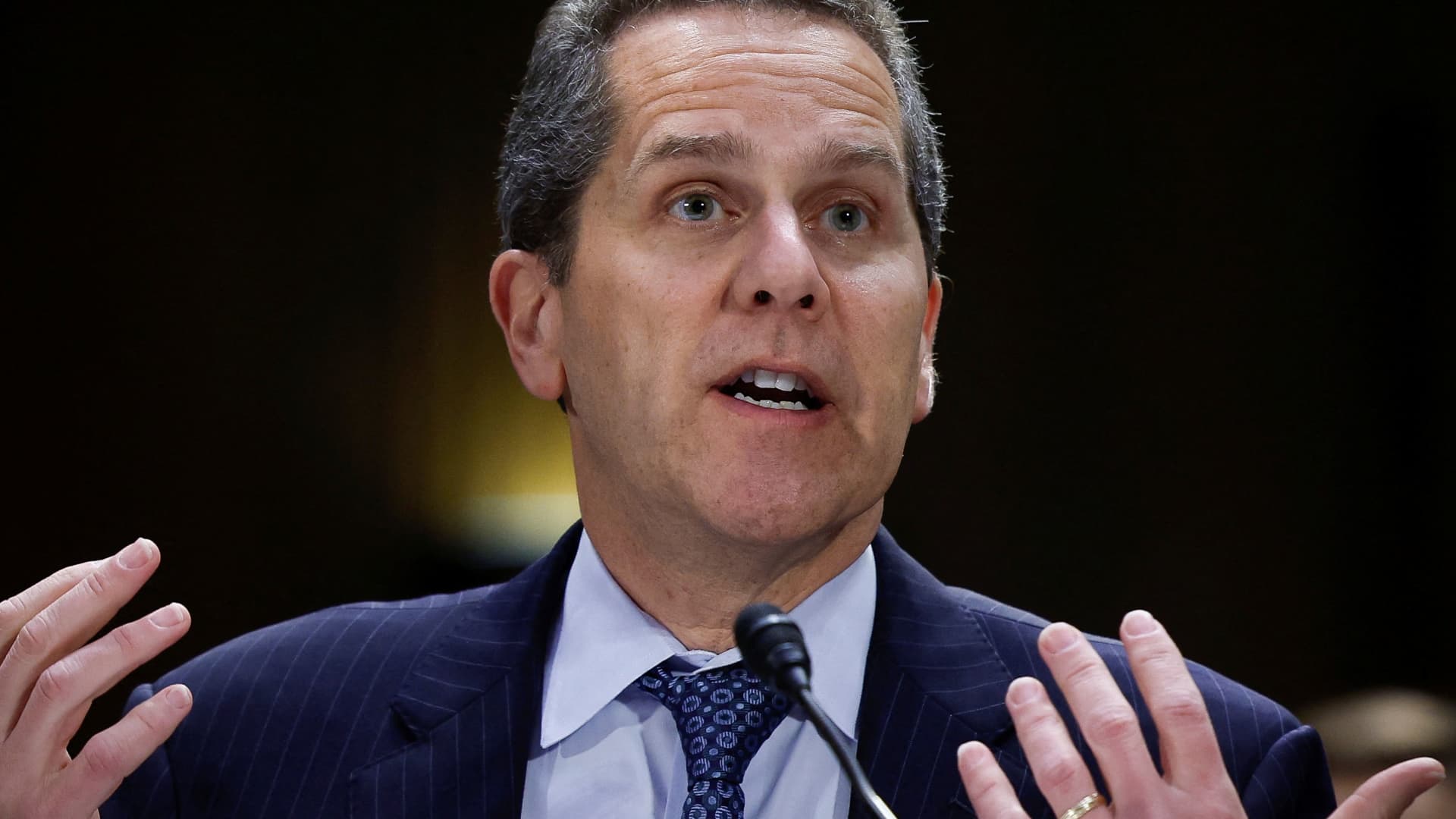Products You May Like
A top Federal Reserve official on Tuesday unveiled changes to a proposed set of U.S. banking regulations that roughly cuts in half the extra capital that the largest institutions will be forced to hold.
Introduced in July 2023, the regulatory overhaul known as the Basel Endgame would’ve boosted capital requirements for the world’s largest banks by roughly 19%.
Instead, officials at the Fed, the Office of the Comptroller of the Currency and the Federal Deposit Insurance Corp. have agreed to resubmit the massive proposal with a more modest 9% increase to big bank capital, according to prepared remarks from Fed Vice Chair for Supervision Michael Barr.
The change comes after banks, business groups, lawmakers and others weighed in on the possible impact of the original proposal, Barr told an audience at the Brookings Institution.
“This process has led us to conclude that broad and material changes to the proposals are warranted,” Barr said in the remarks. “There are benefits and costs to increasing capital requirements. The changes we intend to make will bring these two important objectives into better balance.”
The original proposal, a long-in-the-works response to the 2008 global financial crisis, sought to boost safety and tighten oversight of risky activities including lending and trading. But by raising the capital that banks are required to hold as a cushion against losses, the plan could’ve also made loans more expensive or harder to obtain, pushing more activity to non-bank providers, according to trade organizations.
The earlier version brought howls of protest from industry executives including JPMorgan Chase CEO Jamie Dimon, who helped lead the industry’s efforts to push back against the demands. Now, it looks like those efforts have paid off.
But big banks aren’t the only ones to benefit. Regional banks with between $100 billion and $250 billion in assets are excluded from the latest proposal, except for a requirement they recognize unrealized gains and losses on securities in their regulatory capital. That would likely boost capital requirements by 3% to 4% over time, Barr said.
That appears to be a response to the failures last year of midsized banks caused by deposit runs tied to unrealized losses on bonds and loans amid sharply higher interest rates.
Key parts of the proposal that apply to big banks bring several measures of risk more in line with international standards, while the original draft was more onerous for things like mortgages and retail loans, Barr said.
It also cuts the risk weighting for tax credit equity funding structures, often used to finance green energy projects, tempers a surcharge proposed for firms with a history of operational failures and recognized the relatively lower-risk nature of investment management operations.
Barr said he will push to resubmit the proposed Basel Endgame regulations, as well as a separate set of rules that bolster capital requirements for the biggest global institutions, which starts anew a public review process that has already taken longer than a year.
That means it won’t be finalized until well after the November election, which creates the risk that of Republican candidate Donald Trump wins, the rules could be further weakened or never implemented, a situation that some regulators and lawmakers hoped to avoid.
It’s unclear if the changes appease the industry and their constituents; banks and their trade groups have threatened to litigate to prevent the original draft’s implementation.
“The journey to improve capital requirements since the Global Financial Crisis has been a long one, and Basel III endgame is an important element of this effort,” Barr said. “The broad and material changes to both proposals that I’ve outlined today would better balance the benefits and costs of capital in light of comments received, and result in a capital framework that appropriately reflects the risks of bank activities.”
